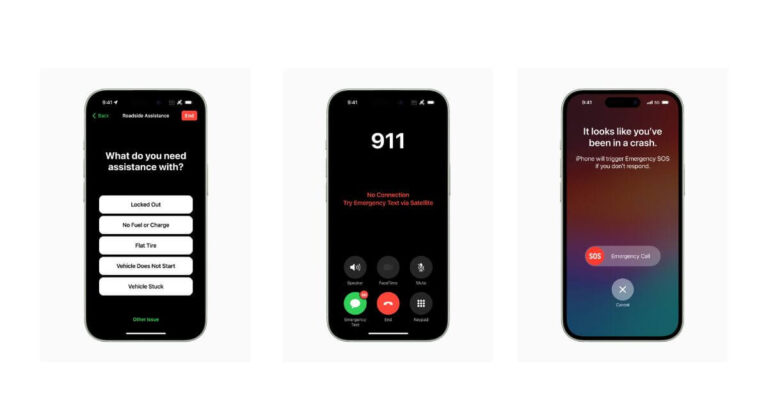Yesterday, Apple unveiled its latest iPhone models and Apple Watch updates, with some notable changes, including safety and sustainability initiatives. Here are the key highlights that can impact your safety, security, and the larger community.
Apple’s iPhone 15 Event: Safety, Security, and Community Highlights
For over 11 years, SafeWise experts have conducted independent research and testing to write unbiased, human reviews (not robots). Learn more.
- Apple introduced four new iPhone models: iPhone 15, iPhone 15 Plus, iPhone 15 Pro, and iPhone 15 Pro Max.
- Prices for these models start at $799 for the base iPhone 15 and go up to $1,199 for the iPhone 15 Pro Max.
- The iPhone 15 lineup offers critical safety capabilities, including Crash Detection and Emergency SOS via satellite, currently available in 14 countries and regions on three continents.
Sign up for our free weekly newsletter to get the best safety news, product info, and deals.
By signing up, you agree to our Terms and Conditions and Privacy Policy.
Expanded safety capabilities for iPhone 15
The iPhone 15 lineup offers expanded safety capabilities, including Crash Detection and Emergency SOS via satellite, currently available in 14 countries and regions on three continents.
- Emergency SOS via satellite has significantly impacted users' lives and is expanding to Spain and Switzerland later this month.
- Building on this innovative satellite infrastructure, iPhone 15 and iPhone 15 Plus introduce Roadside Assistance via satellite in the U.S.

Images: Apple
- When a user faces car trouble without cellular or Wi-Fi coverage, they can connect to AAA, the country's largest roadside assistance provider, using an intuitive interface that transmits information via satellite.
- Access to roadside assistance via satellite will be included for free for two years, with service coverage according to AAA membership or available separately for non-members.
Apple sustainability and environmental initiatives
Apple stated its committed to carbon neutrality, with the Apple Watch Series 9 becoming its "first-ever carbon-neutral product."
- The certification for carbon neutrality is from an independent third party, emphasizing Apple's commitment to environmental responsibility.
- In a move towards sustainability, Apple will no longer use leather in any new product, including watch bands.
- Instead, they will use a new textile called "fine woven," which contains 68% post-consumer recycled content, reducing its carbon footprint.
Shipping and carbon offsetting
- Apple plans to achieve its carbon-neutral goal by shipping products via ocean transport and utilizing carbon credits to offset remaining emissions.
- While carbon pledges and offsets face criticism, Apple's commitment to sustainability is a notable step forward.
What else is new with the iPhone and Apple Watch
Along with safety upgrades and environmentally-friendly moves, there were other significant changes in Apple's latest reveal.
No more proprietary chargers
- European laws primarily drive the shift from Lightning to USB-C charging cables, but they have global benefits.
- This change allows users to charge their iPhones with the same USB-C plugs that billions of other devices use, promoting convenience and reducing clutter.
- Travelers can now carry a single charger for multiple devices, enhancing user convenience and reducing electronic waste.
Pricing increases
- Apple has continued offering exclusive features in Pro and Pro Max models.
- The starting price for the iPhone 15 Pro Max has increased to $1,199, albeit with increased storage capacity.
- While Apple defends this as not a price increase, it aims to boost revenue in response to a slowdown in smartphone sales.
Trade-ins may help offset sticker shock
- Despite the list prices, many consumers in the United States will only pay part of the amount due to trade-in offers and discounts.
- Analysis shows that consumers on contract plans with major carriers typically paid significantly less for previous iPhone models.
In summary, Apple's latest product updates bring convenience and environmental responsibility to the forefront. The transition to USB-C chargers enhances accessibility and reduces electronic waste. At the same time, the company's focus on carbon neutrality and sustainable materials reflects its commitment to the global community and the environment.
Recent Articles



